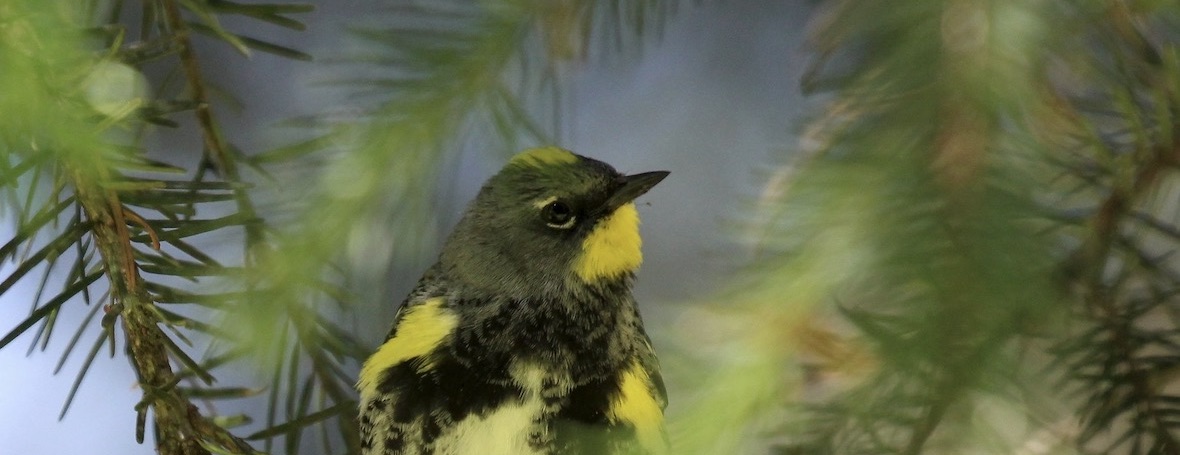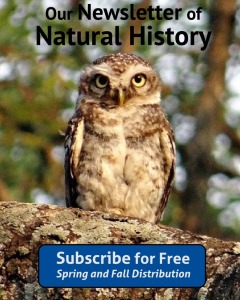
Category: Treasure of the Month
Marvelous Moon Snail Collar

Although this may look like an old-fashioned shirt collar made out of sand, it is actually an egg case of the Moon Snail and contains around 300,000 eggs. From April to September, when the female Moon Snail is ready to…
Read MoreClever Corvids: The Northwestern Crow
This month’s featured treasure is our Northwestern crow, pictured above. This species lives along the BC and Alaskan coast, while a similar species, the American Crow, lives in the BC interior. Crows are generalist scavengers, eating marine invertebrates, other bird’s…
Read MoreHerring Life Cycle Display
Each year the herring spawn turns the ocean a magnificent turquoise and announces that spring is around the corner. Birds and marine mammals are seen and heard lining the shores in anticipation of the bounty. Eagles soar from trees to fish the herring,…
Read MoreFeatured Treasure: Dance of the Grebes
Happy Valentines Day! To celebrate this day of love, our featured treasure of the month is the Western grebe – a bird whose courtship dances are elaborate and spectacular! In one display, called “rushing,” the pair race across the water side by…
Read MoreHornby’s Giant Ammonite

Occasionally people will inquire about whether ammonite fossils have been found on Hornby Island. Indeed, they have! Our featured treasure for the month of December is this giant ammonite that was found by Stevi Kittleson on the shore past the…
Read MoreTiny Sea Star

Our featured treasure for October is a small ochre sea star, found in the tidal creatures display at the Natural History Centre. Also known as the purple starfish, sea stars have a special place in the heart of Hornby Islanders. They…
Read MoreNew Donations for Shell Midden Exhibit

This modified scraper was found by Mary Mackenzie in the Spring of 2015. It was in the midden at Little Tribune beach. Thanks to Mary for donating it to our shell midden display along with several other items that can…
Read MoreHairy Woodpecker Nest
Take a stroll through the woods on Hornby and there’s a good chance you will come across a hairy woodpecker, the most familiar and widespread woodpecker in North America, or hear their rhythmic drumming in the trees. Our featured treasure…
Read MoreNodding Onion in Bloom

The natural history treasure of the month is the nodding onion (allium cernuum). You can see its long grass-like leaves topped by nodding umbels of pink flowers currently in bloom in our ethnobotanical garden. The herb is used for both medicinal and culinary purposes. When cooking, the…
Read MoreWoodworking Tools: The Hand Maul
As we prepare to create a new display of First Nations history on the island this summer, our treasure of the month for June is a tool traditionally used by the first peoples: the hand maul. The maul is considered part of…
Read MoreThe Hayward Heron
Our featured Treasure of the Month for May is a Great Blue Heron (Ardea Herodias): A grey-blue bird with black plume on his head who stands tall near the herring life-cycle display. On Hornby Island, these birds are found in every season. They are most often spotted…
Read MoreTiny Owl, Big Character
The Northern Saw-whet owl at the Natural History Centre was found by Sophie Courteau in the winter of 1995/96. He is a tiny owl with plenty of attitude: Saw-whet’s measure about 20 cm long with a short tail, large head, bright yellow eyes, dark bill, and reddish plumage…
Read MoreThe Mighty Mosasaur
Each month this blog will be featuring a natural “treasure of the month”. The featured object for March is a mosasaur fossil that was found on Hornby Island. The mosasaur–an extinct marine mammal whose distant relatives are snakes and monitor lizards such as the Komodo Dragon–was discovered by…
Read More Hornby Island Natural History Centre
Hornby Island Natural History Centre